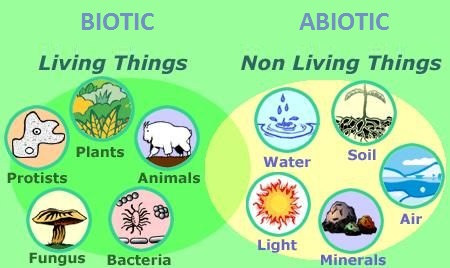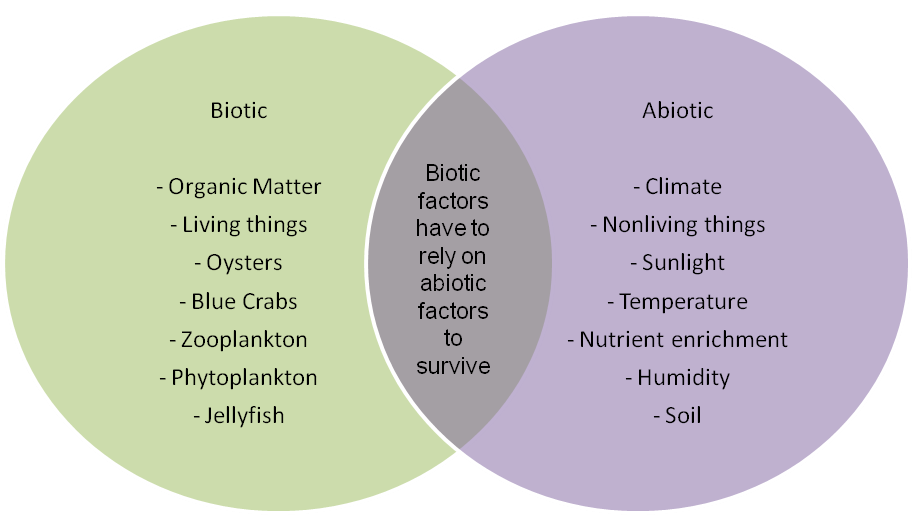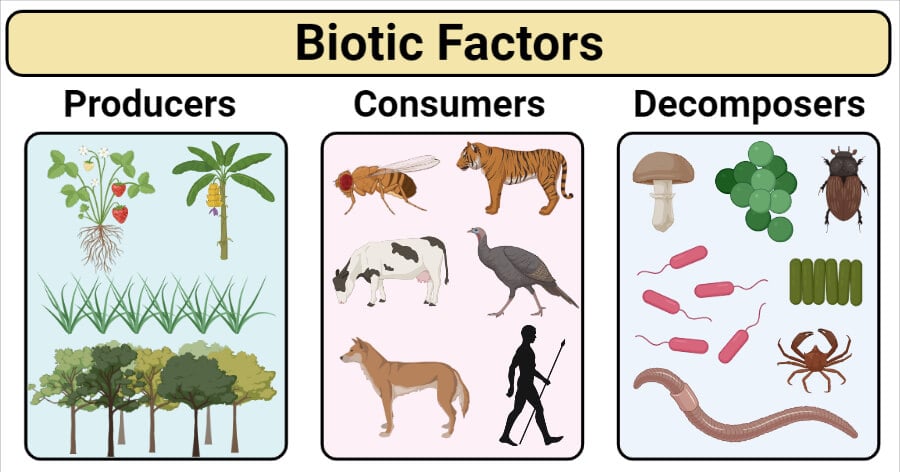Topic ecosystem abiotic components: Discover the pivotal role of ecosystem abiotic components, the unseen architects of biodiversity, shaping life through complex, non-living forces in our environment.
Table of Content
- What are examples of abiotic components in an ecosystem?
- Types of Abiotic Components
- Role of Abiotic Components in Ecosystems
- Abiotic Factors" Impact on Biodiversity
- Conclusion
- YOUTUBE: Abiotic Factors in Ecosystems Water
- Introduction to Abiotic Components in Ecosystems
- Types and Examples of Abiotic Factors
- The Critical Role of Abiotic Components in Ecosystem Functioning
- How Abiotic Factors Affect Biotic Components
- Interactions Between Abiotic and Biotic Components
- Abiotic Factors and Ecosystem Diversity
- Challenges Posed by Changes in Abiotic Factors
- Monitoring and Managing Abiotic Components for Ecosystem Health
- Case Studies: The Impact of Specific Abiotic Factors on Ecosystems
- Conclusion: The Importance of Understanding and Protecting Abiotic Components
What are examples of abiotic components in an ecosystem?
Abiotic components are non-living factors that play a crucial role in shaping an ecosystem\'s environment. These factors include:
- Temperature: The average and extreme temperatures in an ecosystem determine the types of species that can thrive.
- Light: The availability and intensity of sunlight influence photosynthesis and, consequently, the growth of plants.
- Water: The presence of water is essential for all living organisms and influences the distribution of species within an ecosystem.
- Air: The composition of the atmosphere, including oxygen, carbon dioxide, and nitrogen, impacts respiration and affects the diversity of species.
- Soil composition: The mineral content, organic matter, and pH levels of the soil influence the types of plants and microorganisms present.
- Topography: The physical features of the land, such as elevation and slope, affect water drainage patterns and the distribution of species.
- Precipitation: The amount and frequency of rainfall determine the availability of water resources and impact the growth and survival of organisms.
- Wind: Wind patterns shape the distribution of seeds, affect the spread of fire, and influence the movement of organisms.
- Geology: The underlying rock types and geological formations influence the nutrient availability and physical characteristics of an ecosystem.
These abiotic components interact with each other and with the living organisms (biotic components) to create and maintain the unique characteristics of an ecosystem.
READ MORE:
Types of Abiotic Components
- Chemical Elements: These include water, oxygen, carbon, nitrogen, phosphorus, and various minerals.
- Physical Factors: Examples are sunlight, temperature, atmospheric pressure, wind, humidity, and pH levels of soil and water.

Role of Abiotic Components in Ecosystems
Abiotic components play a pivotal role in the life support system of ecosystems. They determine and restrict the population growth, number, and diversity of biotic factors (living components) within an ecosystem. Their presence and variation can significantly influence the structure and function of ecosystems.
Examples of Abiotic Component Influence
- Soil Types and Plant Growth: The composition of soil affects the types of plants that can grow, influencing the overall biodiversity of an area.
- Temperature and Species Distribution: Temperature can limit the distribution of species, as different organisms have different tolerance levels for temperature extremes.
- Water Availability: Water scarcity or abundance shapes the ecosystem, affecting both plant and animal life.
Abiotic Factors" Impact on Biodiversity
Abiotic factors are essential for the survival, reproduction, and growth of living organisms. They directly influence the biodiversity of an ecosystem by creating conditions that can either support a wide variety of life forms or limit the species richness. Changes in abiotic factors can lead to significant shifts in ecosystem dynamics.

Conclusion
Understanding the abiotic components of ecosystems is crucial for the conservation and management of biodiversity. By studying these non-living factors, ecologists can better predict changes in ecosystems and devise strategies to protect endangered species and habitats.
Abiotic Factors in Ecosystems Water
Factors: Discover the fascinating world of factors and how they shape our lives! This video explores the essential elements that influence our decisions, unraveling the hidden forces behind our choices. Join us on this enlightening journey to understand the factors that drive our actions!
Biotic and Abiotic Factors in an Ecosystem
Ecosystem: Immerse yourself in the wonders of the ecosystem as we unveil its delicate balance and intricate connections. Uncover the breathtaking beauty of wildlife and witness the perfect harmony that exists within this complex web of life. Let this captivating video transport you into the heart of nature\'s masterpiece!
Introduction to Abiotic Components in Ecosystems
Abiotic components are the foundation of ecosystems, comprising all non-living elements that significantly influence the living environment. These components are essential for the survival and development of biotic elements, offering the necessary conditions for life to flourish.
- Definition: Abiotic components include physical and chemical factors such as sunlight, temperature, water, atmospheric gases, and minerals.
- Importance: They play a crucial role in regulating the ecosystem"s conditions, making life sustainable by controlling the availability of resources, affecting habitats, and influencing the climate.
- Types: Broadly categorized into climatic factors (like temperature, light, and precipitation) and edaphic factors (related to soil such as pH, mineral content, and soil structure).
Understanding the dynamics of abiotic components is vital for grasping how ecosystems function and sustain various forms of life. These components dictate the living conditions for organisms, shaping ecosystems" structure, diversity, and productivity. By studying abiotic factors, scientists and ecologists can predict changes in ecosystems and develop strategies for conservation and sustainable management.

Types and Examples of Abiotic Factors
Abiotic factors, the non-living components of ecosystems, significantly influence the structure, distribution, and behavior of living organisms. They can be classified into several types, each playing a unique role in the ecosystem.
- Climatic Factors: These include sunlight, temperature, precipitation, and wind. Sunlight is essential for photosynthesis, temperature influences metabolic rates, and precipitation and wind affect the distribution and type of vegetation.
- Edaphic Factors: Related to soil, including texture, composition, pH, and moisture content. These factors determine the types of plants that can grow, thereby influencing the animals that can inhabit an area.
- Topographic Factors: Landforms and the physical features of an area, such as mountains, rivers, and lakes, which can affect climate and soil types across different regions.
- Hydrologic Factors: All aspects of water in the ecosystem, such as availability, distribution, and quality of freshwater and marine environments.
- Atmospheric Gases: The composition of the atmosphere, including oxygen, carbon dioxide, and nitrogen, plays a critical role in the survival of various life forms.
These abiotic factors interact with each other and with the biotic components of the ecosystem, creating a complex web of life support systems. Understanding these interactions is crucial for the study of ecological balance and for the conservation efforts aimed at protecting our planet"s biodiversity.
The Critical Role of Abiotic Components in Ecosystem Functioning
Abiotic factors, the non-living components of ecosystems, significantly influence the structure, distribution, and behavior of living organisms. They can be classified into several types, each playing a unique role in the ecosystem.
- Climatic Factors: These include sunlight, temperature, precipitation, and wind. Sunlight is essential for photosynthesis, temperature influences metabolic rates, and precipitation and wind affect the distribution and type of vegetation.
- Edaphic Factors: Related to soil, including texture, composition, pH, and moisture content. These factors determine the types of plants that can grow, thereby influencing the animals that can inhabit an area.
- Topographic Factors: Landforms and the physical features of an area, such as mountains, rivers, and lakes, which can affect climate and soil types across different regions.
- Hydrologic Factors: All aspects of water in the ecosystem, such as availability, distribution, and quality of freshwater and marine environments.
- Atmospheric Gases: The composition of the atmosphere, including oxygen, carbon dioxide, and nitrogen, plays a critical role in the survival of various life forms.
These abiotic factors interact with each other and with the biotic components of the ecosystem, creating a complex web of life support systems. Understanding these interactions is crucial for the study of ecological balance and for the conservation efforts aimed at protecting our planet"s biodiversity.

How Abiotic Factors Affect Biotic Components
Abiotic factors profoundly influence the functioning and survival of biotic components within ecosystems. These non-living elements serve as the bedrock upon which the intricate relationships among living organisms are built. Understanding their impact is crucial for grasping the complexity of ecological interactions.
- Regulation of Life Processes: Factors such as temperature and water availability directly affect the metabolic rates and hydration of organisms, thereby influencing their survival, growth, and reproduction.
- Distribution and Abundance: The physical environment, shaped by abiotic factors like soil type and climate, determines the distribution patterns and abundance of species by providing habitats with varying levels of suitability.
- Community Dynamics: Changes in abiotic conditions can lead to shifts in ecosystem dynamics, affecting the competitive relationships among species and resulting in alterations in community structure.
- Evolutionary Pressure: Over time, abiotic factors exert selective pressures on populations, driving evolutionary changes and influencing the development of adaptations that enhance survival in specific environmental contexts.
Through these mechanisms, abiotic factors not only shape the immediate living conditions for biotic components but also drive broader ecological and evolutionary trends. Acknowledging their role is fundamental for the conservation of biodiversity and the maintenance of healthy ecosystems.
Interactions Between Abiotic and Biotic Components
The interplay between abiotic and biotic components within ecosystems is a fundamental aspect of ecological balance, driving the cycles of life and determining the distribution and abundance of organisms. These interactions are complex and multidirectional, with each influencing the other in a dynamic relationship.
- Nutrient Cycling: Abiotic factors like soil and water play key roles in nutrient cycling, breaking down organic matter from dead biotic components and making these nutrients available for living organisms.
- Photosynthesis and Energy Flow: Sunlight, an abiotic factor, is essential for photosynthesis, which is the basis for the energy flow within ecosystems, supporting the food webs that sustain biotic components.
- Climate and Habitat Formation: Climatic conditions, shaped by a combination of abiotic factors, influence habitat formation and the suitability of environments for different life forms.
- Evolutionary Adaptations: The presence and variation of abiotic factors over time have led to the evolution of specific adaptations in organisms, allowing them to survive and thrive in diverse environmental conditions.
These interactions underscore the intricate connections between the physical environment and living organisms. By influencing factors such as the availability of resources, the conditions for life, and the evolutionary pressures on species, the abiotic components of ecosystems are integral to the sustenance and evolution of life on Earth.

Abiotic Factors and Ecosystem Diversity
Abiotic factors are crucial determinants of ecosystem diversity, influencing the variety and distribution of life forms across different habitats. These non-living components create the physical and chemical framework within which ecosystems develop, shaping the conditions for biodiversity.
- Variation in Habitats: Differences in abiotic factors such as temperature, moisture, and soil types lead to the formation of diverse habitats, each supporting unique communities of organisms.
- Species Adaptation: The diversity of abiotic conditions challenges species to adapt, leading to evolutionary diversification and the emergence of a wide range of life forms.
- Productivity Levels: Sunlight and nutrient availability, key abiotic factors, influence primary productivity levels, which in turn affect the complexity and diversity of ecosystems.
- Climate Patterns: Global and local climate patterns, driven by abiotic factors like temperature and precipitation, determine the distribution of different ecosystem types around the world.
Through their impact on habitat creation, resource availability, and the conditions necessary for life, abiotic factors are integral to understanding and conserving the rich tapestry of life on Earth. The diversity of ecosystems, from lush rainforests to arid deserts, underscores the powerful role of abiotic factors in shaping the planet"s biodiversity.
Challenges Posed by Changes in Abiotic Factors
Alterations in abiotic factors can lead to significant challenges for ecosystems, affecting their structure, function, and the diversity of life they support. These changes, often accelerated by human activities, pose threats to the balance and sustainability of ecological systems.
- Climate Change: Shifts in temperature and precipitation patterns can disrupt the timing of reproductive cycles, migration patterns, and the distribution of species.
- Pollution: The introduction of pollutants into air, water, and soil can alter the chemical composition of these abiotic components, negatively impacting the health and viability of ecosystems.
- Habitat Destruction: Human activities such as deforestation, urbanization, and agriculture change land use, leading to the loss of habitats and the services they provide.
- Acidification: Increased CO2 levels lead to the acidification of oceans and freshwater bodies, affecting aquatic life and disrupting food chains.
- Soil Degradation: Overuse of land for agriculture, along with erosion and salinization, diminishes soil quality, affecting plant growth and the organisms that depend on them.
These challenges highlight the need for sustainable management and conservation strategies that address the impacts of changing abiotic factors on ecosystems. Understanding these dynamics is crucial for mitigating negative effects and promoting the resilience of ecological systems.

Monitoring and Managing Abiotic Components for Ecosystem Health
Ensuring the health and resilience of ecosystems requires careful monitoring and management of abiotic components. These practices help in maintaining the balance of natural systems, supporting biodiversity, and mitigating the impacts of environmental changes.
- Data Collection: Systematic collection of data on abiotic factors such as temperature, precipitation, and soil quality helps in understanding ecosystem dynamics and identifying changes over time.
- Climate Adaptation Strategies: Developing strategies to adapt to climate change, such as conservation of water resources and restoration of natural habitats, can mitigate the impacts of altered abiotic factors.
- Pollution Control: Implementing measures to reduce pollution, including regulations on emissions and the use of environmentally friendly materials, protects the chemical balance of ecosystems.
- Soil Conservation: Practices like crop rotation, reduced tillage, and the use of organic fertilizers help in maintaining soil health and preventing degradation.
- Water Management: Efficient use of water resources, through technologies such as drip irrigation and the protection of watersheds, ensures the availability of water for ecosystems.
By monitoring and managing abiotic components, we can preserve ecosystem health, enhance the resilience of habitats to environmental changes, and secure the services they provide to humanity and the planet.
Case Studies: The Impact of Specific Abiotic Factors on Ecosystems
Examining real-world examples helps illustrate the profound effects abiotic factors can have on ecosystems. These case studies highlight the importance of understanding and managing these non-living components for the health and sustainability of natural environments.
- The Great Barrier Reef and Water Temperature: Increased water temperatures have led to coral bleaching events, threatening the biodiversity and structure of this complex marine ecosystem.
- Amazon Rainforest and Precipitation Patterns: Changes in rainfall patterns, partly due to deforestation, have impacted plant growth and animal habitats, affecting the rainforest"s biodiversity and carbon storage capabilities.
- Salinization of the Aral Sea: Irrigation practices and diversion of water sources have led to increased salinity, dramatically altering the aquatic environment and leading to the decline of native species.
- Desertification in the Sahel: Changes in climate and human activities have led to desertification, affecting soil quality, plant life, and local communities" livelihoods.
These case studies underscore the intricate relationship between abiotic factors and ecosystem health, demonstrating the urgent need for integrated environmental management and conservation strategies.

READ MORE:
Conclusion: The Importance of Understanding and Protecting Abiotic Components
The health and stability of ecosystems depend significantly on the abiotic components that underlie all ecological processes. Understanding these non-living factors is crucial for predicting changes within ecosystems, managing natural resources sustainably, and mitigating environmental challenges.
- Foundation for Life: Abiotic components provide the essential conditions for life, supporting the growth, reproduction, and survival of all biotic elements.
- Indicator of Ecological Health: Changes in abiotic factors can serve as early indicators of environmental stress or degradation, guiding conservation efforts.
- Climate Change Mitigation: Managing abiotic components effectively contributes to climate change mitigation efforts, helping to preserve biodiversity and ecosystem services.
- Future Generations: Protecting abiotic components ensures the resilience and sustainability of ecosystems for future generations, maintaining the natural heritage and resources necessary for human well-being.
Ultimately, the protection and understanding of abiotic components are fundamental to the conservation of ecosystems and the biodiversity they support. Through dedicated research, management, and conservation practices, we can safeguard these critical elements of our planet.
Embracing the intricacies of ecosystem abiotic components unlocks the secrets to sustaining life"s diversity. Their protection is our pathway to a resilient and vibrant planet for future generations to cherish.





